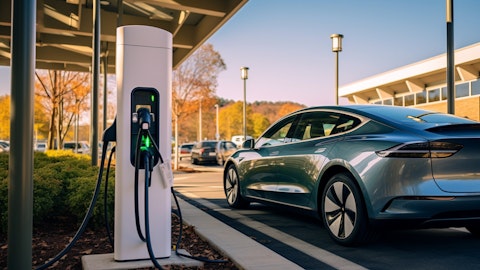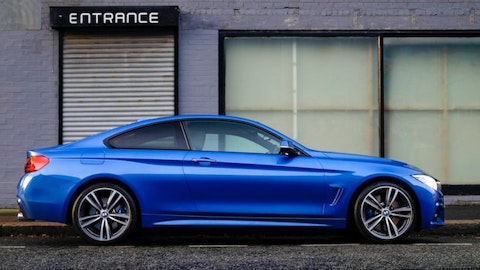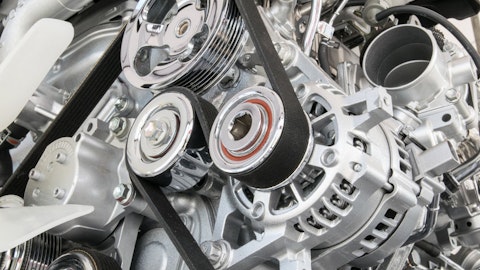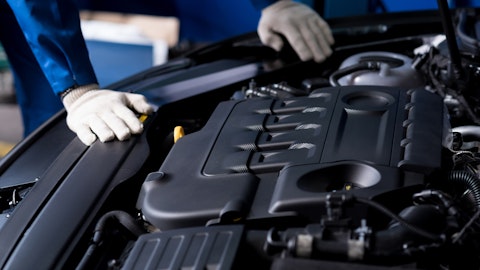Christopher May: Yes, this is Chris. Good morning. Look, from a margin perspective, as you know, we don’t typically discuss margin by specific programs and platforms. But as we look to source and win business in this space, we have certain financial hurdles that we are required to maintain and we want to keep that discipline. And as we go into these negotiations, that is on top of our mind as well. So maintaining a good, healthy financial profile as part of our quotation process. And whether it’s electrification or ICE programs, that’s the discipline we intend to keep.
Unidentified Analyst: Thank you very much.
Operator: Our next question comes from James Picariello from BNP Paribas. Please go ahead with your question.
James Picariello: Hi, guys.
David Dauch: Good morning, James.
James Picariello: Can you just provide some additional context on what the specific challenges were at the [indiscernible] plant downtime in September on the driveline side, just to have some color or some context there?
David Dauch: I’m sorry, James, this is David. Are you asking about the Three Rivers and the downtime we experienced there?
James Picariello: Correct.
David Dauch: Okay. It was a component-related matter, both internally as well as externally. And just really a throughput issue is really what it came down to. So FTQ and OEE-related matters. Like I said, those issues are both resolved as far as the outside supplier as well as our own internal capability. So we feel comfortable with where we are at this time.
James Picariello: Got it. And then just as we think about the production restart process post ratification, once we get there, from your perspective, how well positioned is the supply chain to get volumes back going again? Maybe remind us what that timeline look like from ratification to restart back in 2019, that would be helpful? Thanks.
David Dauch: Yes. I mean typically, workers don’t go back into the plants until their agreements are ratified. Obviously, that’s different with these negotiations here where the UAW has allowed the workers working with the OEMs to come back and start before the ratification is completed. Ratification will take several weeks. So by mid-November, you can expect probably the four to be done and it will be staggered based on the resolution of timing between Stellantis and GM as well. But let’s just say the balance of November. I think a lot of the supply base is especially being encouraged by the OEMs try to run as much as we possibly could during that downtime to address service parts, aftermarket and production-type related things.
We’ve filled up a lot of the inventory. So we should all be in a fairly good shape for now. My biggest concern, quite honestly, is what others did with their labor, and can they attract the labor back, and then can they maintain continuity of supply as things get going. You’ll see a ramp-up over the next two to four weeks to get these plants back at full rate, but we fully expect the OEMs to try to make up as many lost units as possible, which is going to put a lot of stress and a lot of demand on the overall supply chain, which is already fragile to begin with.
James Picariello: Thanks.
Operator: And our next question comes from Douglas Karson from Bank of America. Please go ahead with your question.
Douglas Karson: Great, guys. Thank you for the update here. Congrats on some of the EV business you’ve won. Can we maybe just turn to the balance sheet? I know that reduction has been in sharp focus, and you’ve done well reducing debt over the last few years. If you could just refresh us on where your targets lie and how 2024, 2025 may look our net leverage ratio, which I believe is at 3.3% right now.
Christopher May: Yes. Good morning, Doug. This is Chris. Yes, in terms of how we are addressing the balance sheet from a capital allocation part, I think we’ve been pretty consistent over the last several years that our strong free cash flow generation will be primarily used to pay down gross debt. We’ve continued to do that really over the last couple of years, each and every quarter. Obviously, in the third quarter, we took just a little bit of our foreign debt down, held cash coming into a UAW work stoppage situation. But obviously, paying our debt down will continue to be top of our mind. From a leverage perspective, our goal is we’ve articulated publicly many times has been to drive towards a 2x net levered company. That’s driven in part by our cash flow generation and continued reduction of debt, but also then to grow our EBITDA sort of from here in these run rates, especially as production starts to clip up into the future.
So those goals and those objectives and those allocation priorities have not changed.
Douglas Karson: That’s helpful. And if I could just circle back to the EV wins. In the past, you’ve put out a backlog for EV. I’m looking at the slide deck, I don’t see it. I know the numbers you’re typically pretty strong. Can you maybe give us an update on what the backlog looks like in EV?
Christopher May: Yes, we released that earlier in the year, actually at our CES show in January. It was about 40% of our backlog. We typically update that once a year. I would expect to see something early next year with that.
Douglas Karson: Perfect. Thanks so much.
David Dauch: Thanks, Doug.
Operator: Our next question comes from Tom Narayan from RBC. Please go ahead with your question.




